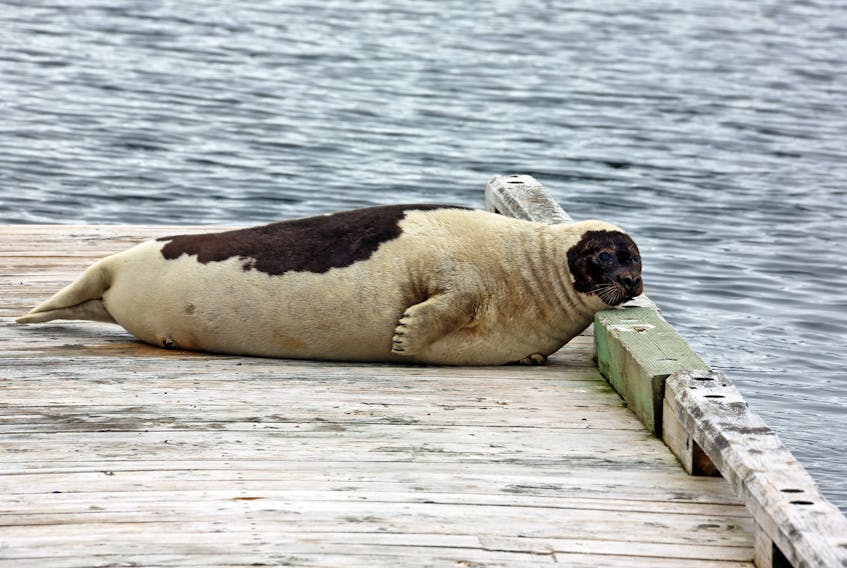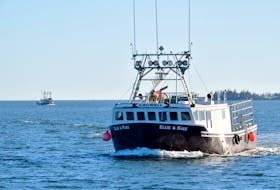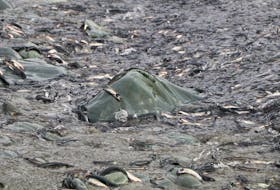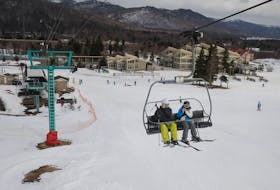If you have a weak stomach, the video might be difficult to watch.
But for fish harvesters in Newfoundland and Labrador, the images of a seal stomach being cut open to reveal a gut full of small herring and Arctic cod is proof enough that seals are a factor in the slow recovery of cod stocks.
Last week Dion Weir and a buddy hunted a few seals for personal use in Hall’s Bay, off the Baie Verte Peninsula.
When they brought the animals ashore and started to clean them, they notice the stomachs on the animals were bulging.
They were filled with small fish.
“Up in these bays now they’re eating herring and Arctic cod,” Weir said. “Wherever the cod is, the seals are there."
Multiply that by 7.6 million seals —the latest DFO estimate on seal population on the East Coast — says Ryan Cleary and the impact is obvious. Cleary manages the Facebook page Fish-NL where Dion Weir’s video was first posted.
He has also been outspoken on fisheries issues for years, as a journalist in the 1990s and 2000s and raising questions in Ottawa during his tenure as the NDP member of Parliament for St. John’s South-Mount Pearl 2011-15.
Recently he and a group of fish harvesters have been fighting to break away from the Fish Food and Allied Workers (FFAW) union. However, the province’s Labour Relations Board rejected the group’s application for certification.
Cleary currently works as a consultant to the inshore fishing industry in Newfoundland and Labrador.
Ironically, as Weir’s video was making the rounds on social media this week Liberal MP Goudie Hutchings was reminding fish harvesters in her Long Range Mountains riding about the work being done by the Atlantic Seal Task Force, and encouraging them to submit comments to the group.
That task force, established by Fisheries and Oceans minister Bernadette Jordan last year, was mandated to gather input and make recommendations on DFO’s science activities and programs on seals and their role in the ecosystem in Atlantic Canada and Quebec.
Cleary said he’s offered comments to the task team, but because of the team’s ‘narrow mandate’, he says it’s not likely the team will come to any conclusions about the impact of seals on cod stocks and won’t offer any thoughts or recommendations on that issue.
“People have to realize what they (task team) are specifically looking at. They want input on the priorities of the department’s Atlantic Seal Science program and how to increase the involvement of the fishing industry in seal science projects.”
Besides, he said, recommendations on seals were offered by another task force to the federal government 30 years ago.
Dr. Leslie Harris led a task force in 1989 to examine the state of the Northern Cod stock, which was by then in evident decline.
Harris and company traveled the province consulting with inshore fishers, examined DFOs own scientific documents and consulted with fish scientists from other jurisdictions.
In their final report, the Harris Task Force wrote, “The multiplication of seals that feed upon shrimp and capelin will, even if seals eat no cod at all, still have the potential for reducing the cod biomass.”
Cleary notes the Harris report offered two specific recommendations on seals.
The report advised Ottawa to “undertake or commission research to establish seal feeding patterns and consumption rates throughout the year” and make “every reasonable effort . . . to understand the cod-capelin-seal interactions and to incorporate appropriate data into cod population assessments.”
In the 30 years since, said Cleary, Ottawa failed to follow those recommendations on seals.
However, the department has conducted science on seals and studied the impact of seal predation on fish stocks.
According to studies in 2007 and 2008, the department determined harp seal predation was not a significant factor in the lack of cod recovery, and there was no evidence that harp seals negatively impacted capelin populations.
“Through the 2019 cod assessment we determined that harp seals aren’t primary drivers of cod abundance off the coast of Newfoundland or Southern Labrador,” the department states on its website.

Grey seals, however, appear to be a different matter, according to DFO.
On its website the department said it has studied the relationship between grey seals and other parts of the Atlantic ecosystem, and conducted several studies on grey seal diet.
“The lack of cod recovery in the southern Gulf of St. Lawrence appears to be due to high mortality of larger cod,” the department states on its website.
The DFO also says, “Predation by grey seals may account for up to 50 percent of natural cod mortality, making them a major factor limiting this specific stock’s recovery.”
For Ryan Cleary and others, the evidence was in the gut of the seal killed in Hall’s Bay.
Take that amount of herring and multiply it by over seven million guts, he said, adding fishers have also cut open seal stomachs to find crab and capelin.
In Cleary’s mind the answer is clear.
“When you consider the fact that all three cod stocks adjacent to Newfoundland are all in the critical zone; and shrimp in area 6 is also in the critical zone, and then … crab stocks are the lowest level in 25 years,” said Cleary, “What we need is action.”
He added, “People are reporting seals in river mouths, in rivers, on the North East Coast, in the Gulf … I’m surprised we have any fish left.









